8 Colorful Flowering Shrubs to Grow for Cut Flowers
These flowering shrubs not only look gorgeous in your garden, but their flowers can fill your vases for weeks.
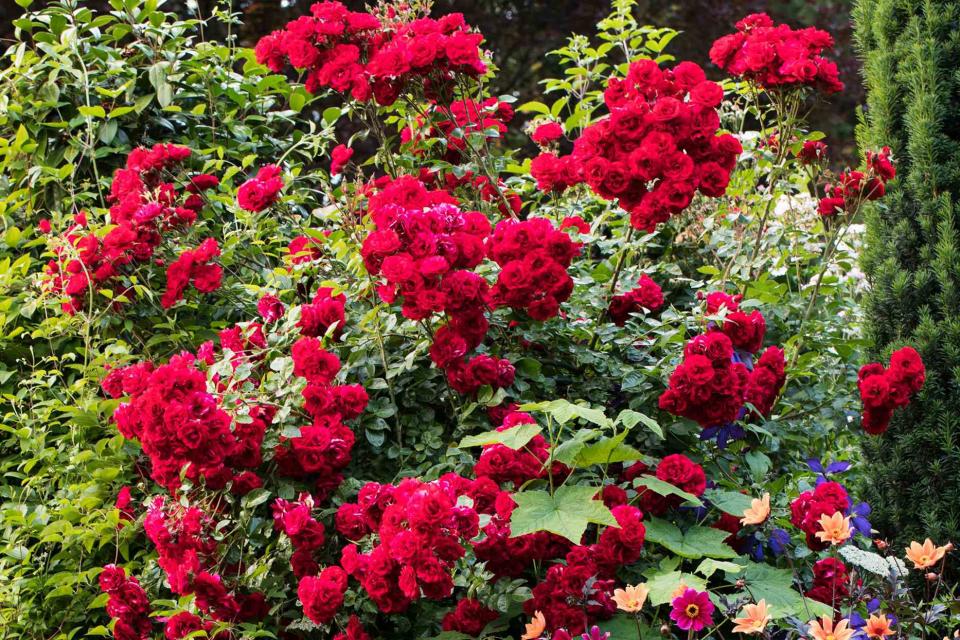
Many annual and perennial flowers are staples in the cutting garden, but you can significantly extend your seasonal options for indoor floral arrangements with flowering shrubs. Their flowers are generally held on sturdy stems that make for easy arranging, and the blooms are often flanked by attractive foliage. Many bloom for weeks—or months—providing a steady supply for your vases. And for most of these shrubs, the more you cut, the more flowers they produce. The following flowering shrubs are among the best to grow for cut flowers.
Caryopteris
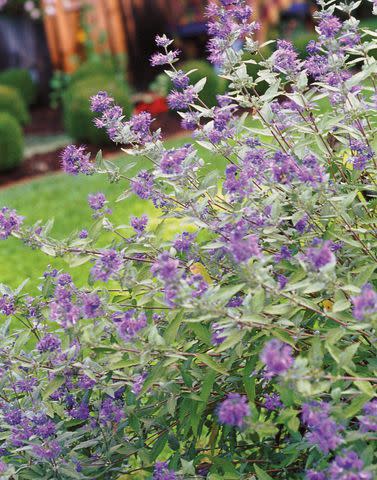
Also called blue beard or blue mist, caryopteris (Caryopteris x clandonensis) forms clusters of soft to deep blue flowers from late summer to fall on upright stems. The blooms are flanked by attractive and aromatic gray-green leaves that have silvery undersides. Their stems serve as a wonderful, soft colored filler in arrangements. This is a small shrub, topping out at about 3 feet tall and wide, but it will provide an abundance of flowers for indoor use. Its burst of blooms coming in late in the growing season is very welcome, because few shrubs bloom at this time of year.
Hydrangea
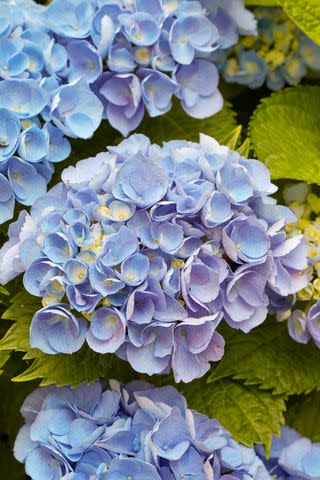
There are several types of hydrangeas that are outstanding for cutting. Bigleaf hydrangea (Hydrangea macrophylla), especially the mop-head types, are popular for indoor arrangements. The Incrediball series of smooth hydrangea (Hydrangea arborescens) are also standouts. Panicle hydrangea (Hydrangea paniculata) is a reliable bloomer that flowers on new wood. All bear huge clusters of small flowers over several months. While a single stem can create a simple, elegant statement, a bundle of these beauties makes a dramatic large centerpiece.
Tips
Hydrangeas absorb a lot of water, so refill your vases regularly.
Ninebark
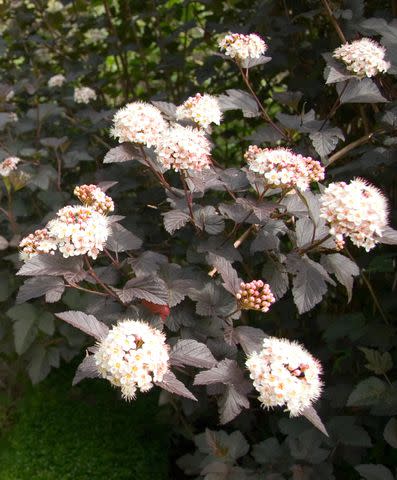
The late spring flowers of ninebark (Physocarpus spp.) are just the beginning of its attributes as a fabulous vase filler. The clusters of tiny blooms are usually white or pink, and they are followed by showy deep pink or red seed pods in summer. But one of the best reasons to use ninebark in indoor arrangements is the gorgeous foliage that is a great foil for flowers of any kind. Depending on the variety, ninebark leaves may be green, coppery orange, gold, burgundy red, or purple-black.
Smoke Bush
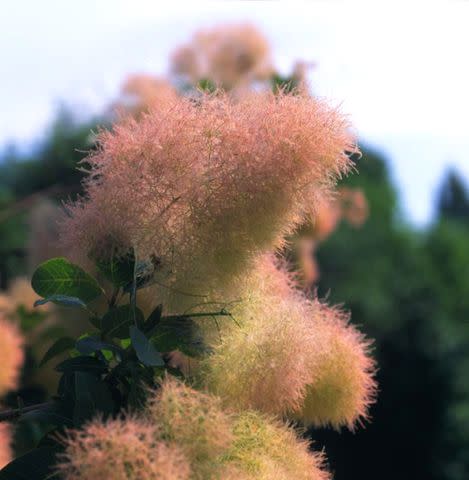
Smoke bush (Cotinus coggygria) is another shrub whose value in arrangements stems as much from its foliage as its flowers. The soft clouds of late spring to summer flowers vary from yellow to pale or deep pink, depending on variety. These add an open, airy quality to any arrangement. The rounded leaves also come in a range of colors including green, yellow, pinkish bronze, and deep burgundy and they may change color in fall. Long smoke bush stems—with or without flowers—add spectacular drama to large arrangements.
Roses
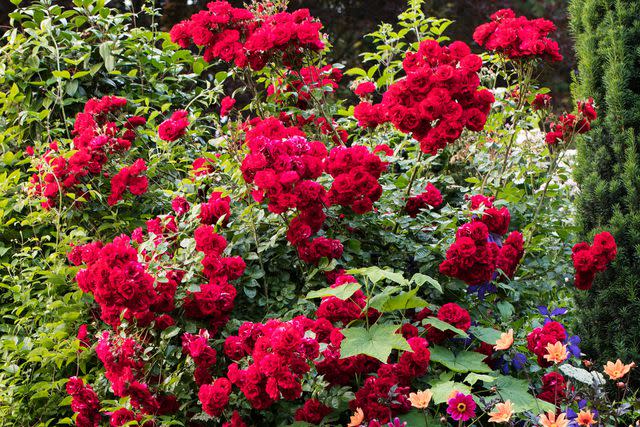
Roses (Rosa spp.) are among the most beloved flowers for cutting for lots of reasons: elegance of form, wide range of colors, long season of bloom, and, at least for many rose varieties, that irresistible fragrance. To make the most of roses for your indoor arrangements, cut the flowers when the petals are just beginning to open. When arranging your roses, re-cut the stem to a 45-degree angle. Re-trimming stems and changing the water in your vase every day or two will help make the flowers last longer. Placing your rose arrangement in a cool room out of direct sunlight will also help extend its life.
Related: The 12 Best Pruning Shears of 2023 to Keep Your Garden in Check
Gardenia
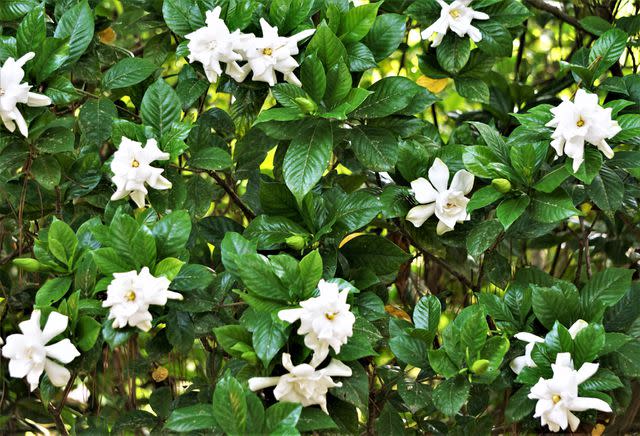
ANCHASA MITCHELL / Getty Images
The white flowers of gardenia (Gardenia spp.) bring their intoxicating fragrance indoors to perfume your interior spaces. Cut gardenia stems about 4 to 6 inches long and trim off the lower leaves, being sure to keep several of the dark, glossy upper leaves to enhance the blooms. A single bloom or small cluster of 3 flowers is all it takes to create a lovely display. Like roses, re-cut the stems to a 45-degree angle when arranging them. Place your gardenia arrangement in a spot out of the sun, where the fragrance can be appreciated close at hand—enclosed spaces such as a bedroom or bathroom are ideal.
Tips
Avoid touching gardenia flowers with your bare hands—the oils on your skin can cause the petals to turn yellow.
Summersweet
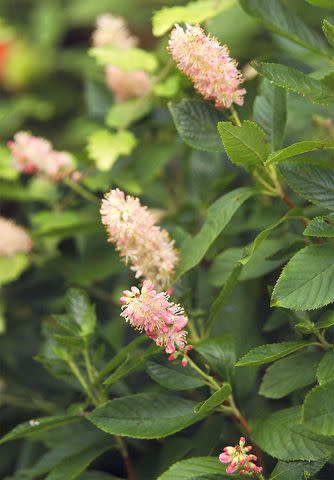
Summersweet, also called sweet pepperbush (Clethra alnifolia), is a densely branched shrub with glossy green leaves. Its fragrant white or pink flowers, which attract pollinators of all sorts, appear in late July; flowering often continues for 4 to 6 weeks. Add to that, cut stems can remain attractive for several weeks in a vase. 'Hummingbird' is a dwarf variety with white flowers, ‘Ruby Spice’ bears pink flowers on plants that may reach 6 feet tall.
Butterfly Bush
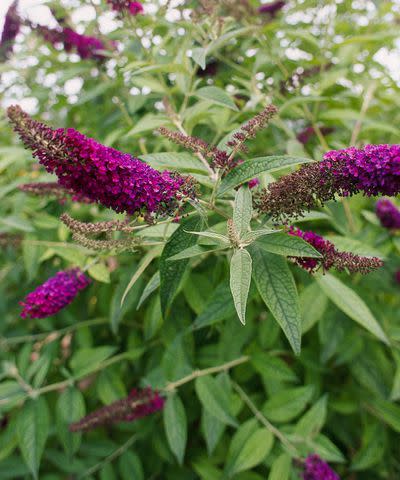
Butterfly bush (Buddleia spp.), as its name implies, is a butterfly magnet in the garden. Its arching stems with clusters of tightly spaced flowers make great indoor bouquets by themselves; they’re also lovely additions in mixed arrangements. Flower colors range from pale to deep purple and shades of pink to white and yellow. For longest vase life, cut stems for indoor arrangements when about half the flowers in the cluster are open and before any have begun to fade. Harvesting flowers for indoor arrangements and deadheading faded flowers on the shrub encourages the production of more flowers, so don’t hold back.
Related: Create a Beautiful Butterfly Garden with These Plants
Tips for Cutting Flowers
Water the plant the day before cutting flowers so that stems are not limp.
Use sharp pruners or garden shears to make clean cuts.
Collect flowering stems early in the morning before the sun’s heat causes them to lose moisture.
Always make your cut just above a node or lateral branch.
Remove excess leaves which can lead to wilting (you may want to leave a few for show but always remove leaves below the water level of your vase).
Submerge stems in clean water as soon as you cut them to encourage water absorption.
Make a second clean cut when you begin arranging the flowers.
Keep an eye on the water level in the vase, adding when it’s needed and changing it regularly to keep things fresh.
Related: Plant a Party with These 11 Vibrant Summer Flowers
For more Better Homes & Gardens news, make sure to sign up for our newsletter!
Read the original article on Better Homes & Gardens.

